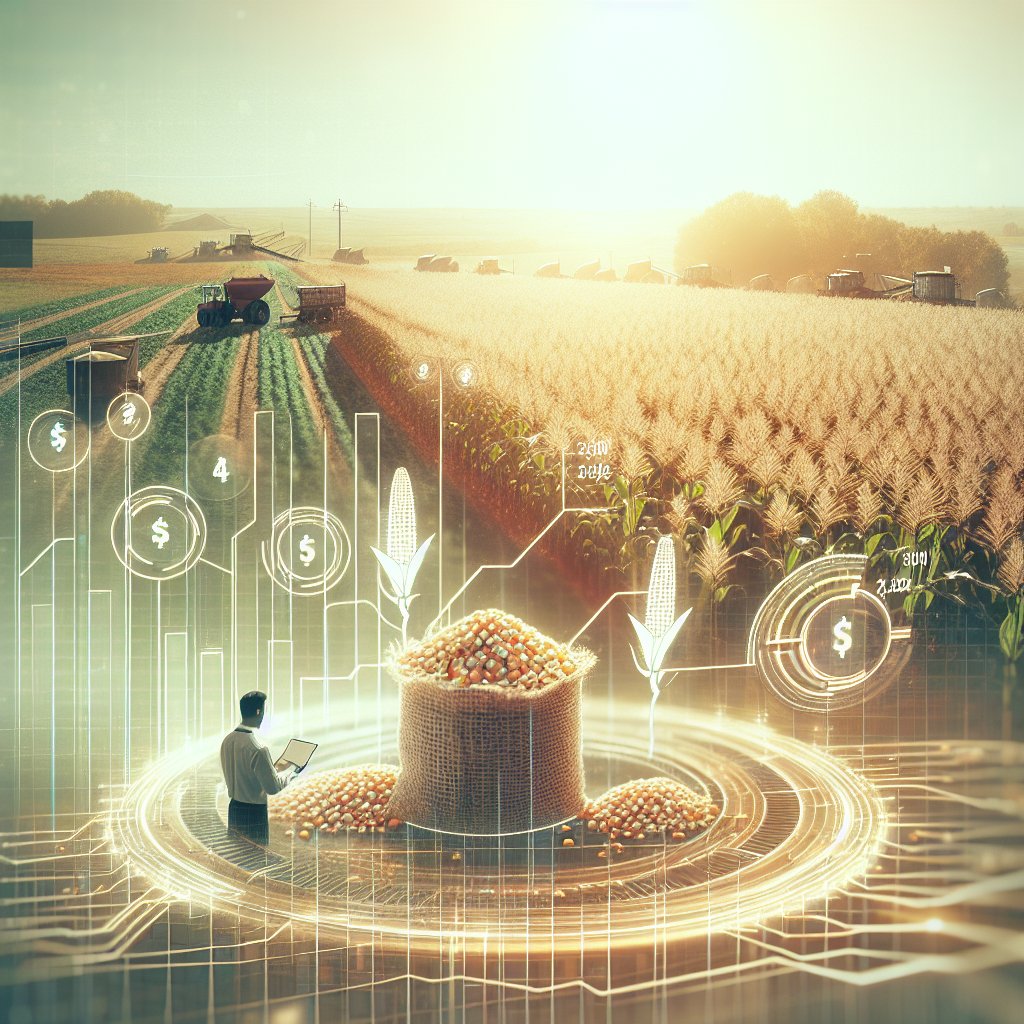The current prices of corn seeds play a crucial role in shaping agricultural practices and influencing the economic viability of farming operations. As one of the most widely cultivated crops globally, corn serves as a staple food, animal feed, and a key ingredient in various industrial products. Understanding the dynamics of corn seed pricing is essential for farmers, agronomists, and policymakers alike, as it directly impacts planting decisions, crop yields, and overall agricultural sustainability. This article delves into the factors affecting corn seed prices, their implications for farmers, and the broader effects on the agricultural sector.
Factors Influencing Corn Seed Prices
Several factors contribute to the fluctuations in corn seed prices, each interlinked with market demand, production costs, and global agricultural trends. Understanding these factors is vital for stakeholders in the agricultural sector.
1. Supply and Demand Dynamics
The fundamental economic principle of supply and demand significantly influences corn seed prices. When demand for corn increases—due to factors such as population growth, rising incomes, or increased use in biofuels—the prices of corn seeds tend to rise as well. Conversely, if there is an oversupply of seeds or a decrease in demand, prices may fall.
- Population Growth: As the global population continues to grow, the demand for food, particularly staple crops like corn, increases. This heightened demand can lead to higher seed prices.
- Biofuel Production: The rising interest in renewable energy sources has led to increased corn production for biofuels, further driving up demand for corn seeds.
- Global Trade Policies: Tariffs, trade agreements, and export restrictions can also impact the availability and price of corn seeds in different regions.
2. Production Costs
The costs associated with producing corn seeds, including labor, fertilizers, pesticides, and technology, also play a significant role in determining their prices. As these production costs rise, seed companies may pass on the expenses to farmers through higher seed prices.
- Labor Costs: In regions where labor costs are increasing, seed production may become more expensive, leading to higher prices for farmers.
- Input Costs: The prices of fertilizers and pesticides can fluctuate based on global market conditions, affecting the overall cost of seed production.
- Technological Advancements: While innovations in seed technology can lead to higher initial costs, they may also result in better yields and reduced long-term expenses, influencing seed pricing strategies.
3. Climate Change and Environmental Factors
Climate change poses a significant threat to agricultural production, including corn farming. Extreme weather events, changing precipitation patterns, and shifting growing seasons can affect both the supply of corn seeds and the demand for them.
- Weather Variability: Droughts, floods, and other extreme weather conditions can lead to crop failures, reducing the supply of corn seeds and driving prices up.
- Adaptation Strategies: Farmers may seek seeds that are more resilient to climate change, which can lead to increased demand for specific seed varieties, impacting overall prices.
Implications for Farmers and the Agricultural Sector
The fluctuations in corn seed prices have far-reaching implications for farmers and the agricultural sector as a whole. Understanding these implications is essential for making informed decisions regarding planting and investment strategies.
1. Economic Viability of Farming Operations
For many farmers, the cost of seeds is a significant portion of their overall production expenses. When corn seed prices rise, it can strain their budgets and impact their profitability. Farmers must carefully consider their planting decisions, balancing the potential for high yields against the costs of seeds.
- Budgeting and Financial Planning: Farmers need to develop robust financial plans that account for potential fluctuations in seed prices, ensuring they can sustain their operations even during challenging economic times.
- Crop Diversification: In response to rising seed prices, some farmers may choose to diversify their crops, reducing their reliance on corn and mitigating financial risks.
2. Adoption of Technology and Innovation
The rising prices of corn seeds can also drive innovation within the agricultural sector. Farmers may seek out advanced seed technologies that promise higher yields or better resistance to pests and diseases, ultimately leading to more sustainable farming practices.
- Investment in Research: Seed companies may invest more in research and development to create high-yield, disease-resistant varieties that can justify higher prices.
- Precision Agriculture: The adoption of precision agriculture techniques can help farmers optimize their use of seeds, fertilizers, and water, potentially offsetting the impact of rising seed prices.
3. Policy and Regulatory Considerations
Government policies and regulations can significantly influence corn seed prices and the agricultural landscape. Policymakers must consider the implications of seed pricing on food security, rural economies, and environmental sustainability.
- Subsidies and Support Programs: Governments may implement subsidies or support programs to help farmers cope with rising seed prices, ensuring that they can continue to produce essential crops.
- Research Funding: Increased funding for agricultural research can lead to the development of more affordable and resilient seed varieties, benefiting farmers and consumers alike.
Conclusion
The current prices of corn seeds are influenced by a complex interplay of supply and demand dynamics, production costs, and environmental factors. These prices have significant implications for farmers, affecting their economic viability and driving innovation within the agricultural sector. As the world continues to grapple with challenges such as climate change and population growth, understanding the factors that influence corn seed prices will be essential for ensuring a sustainable and resilient agricultural future. Policymakers, farmers, and industry stakeholders must work together to navigate these challenges and promote practices that support both economic stability and environmental sustainability in agriculture.




